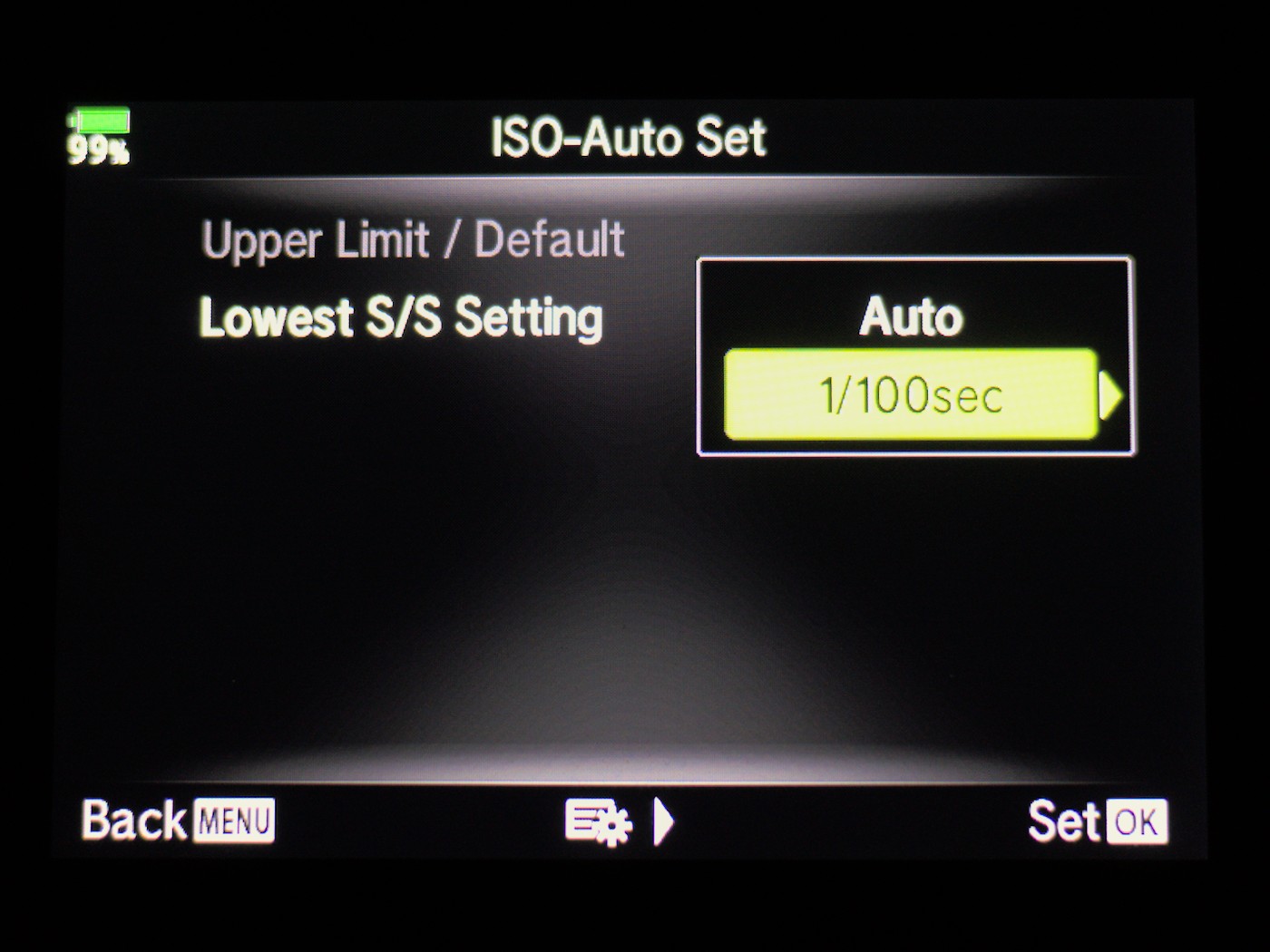Weird things I want my camera to do
There are some features I’d like my camera to have that few, if any camera manufacturers have deemed important.
Minimum shutter speed
In aperture priority mode with automatic ISO, a camera uses the aperture selected by the photographer and reduces shutter speed when more light is required until a minimum is reached, after which it increases ISO. The usual minimum is the reciprocal of the focal length, e.g. 1/50s for a 50mm lens. This will avoid blur from camera shake in most situations.
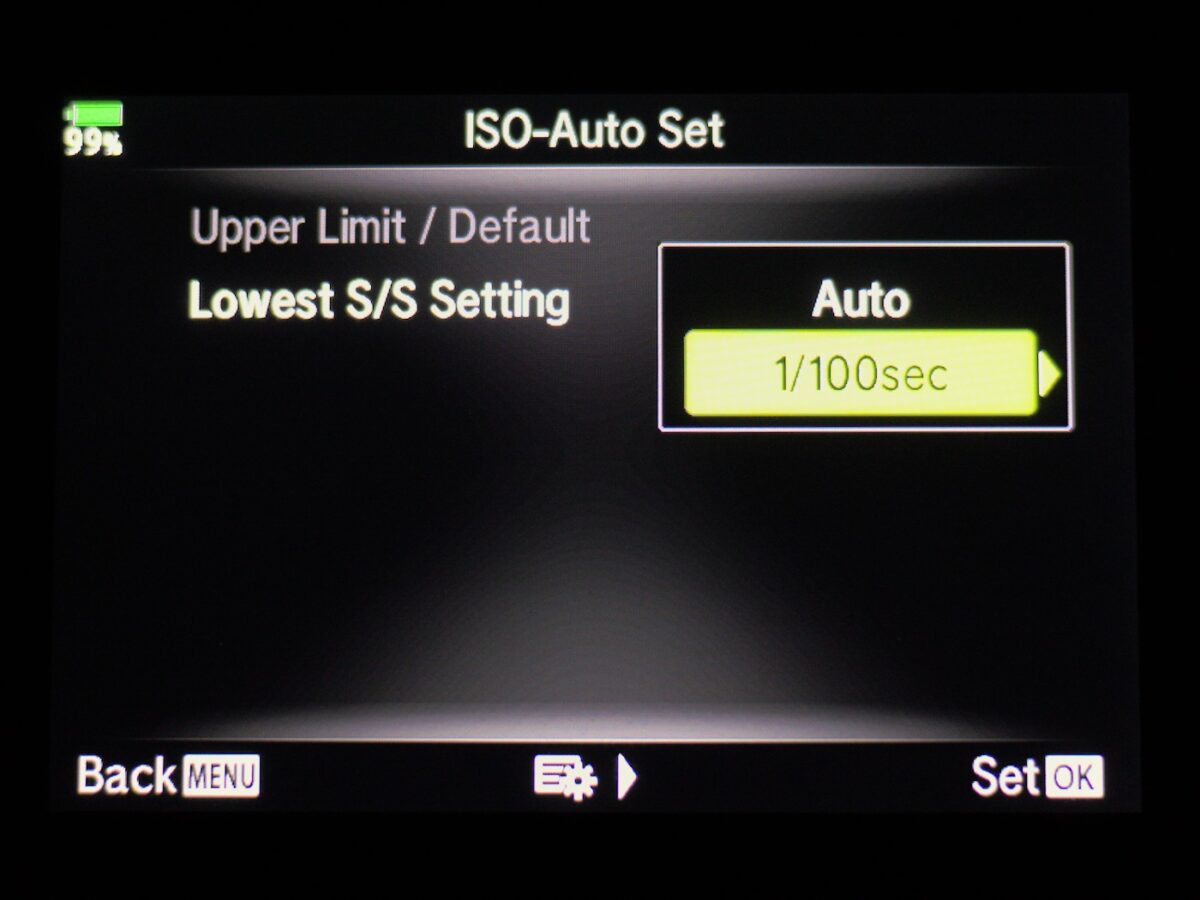
With an image stabilizer, subject movement becomes the limiting factor in most situations, and many newer cameras allow the photographer to select a minimum shutter speed manually. I rarely care about the exact shutter speed as long as it’s more than my chosen value, but that changes by subject, ranging from 2 seconds for completely immobile subjects to 1/4000s for fast birds in flight. I change this setting often while shooting, and would like the camera to adjust shutter speed and ISO for me within limits I choose when the light changes.
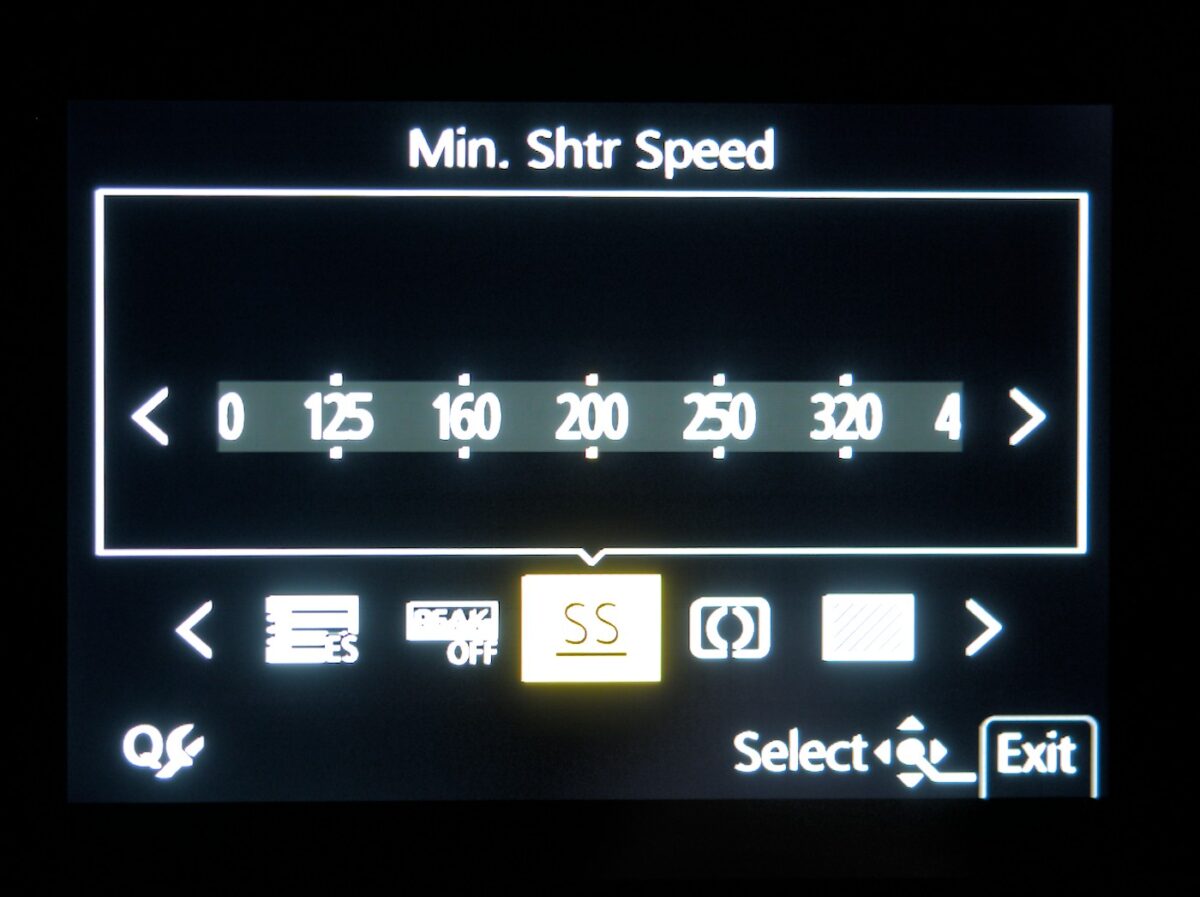
No camera I am aware of lets the user assign it to a command dial, not even the Sony A7 IV with its four assignable dials. A minority, such as most recent Panasonics allow assigning a button to temporarily adjust it using a dial but in most cameras, it’s buried in the menus.
Minimum shutter speed should be treated as a shooting setting, not a configuration setting. I’m not alone in this; Chris Nichols of DPReview TV recently asked for the same thing in a Youtube video.
Custom modes
Modern cameras have a plethora of configuration options to fit both the photographer and the situation. It is a boon to be able to turn one dial and set the exposure mode, minimum shutter speed, aperture, autofocus area, burst rate, and more from something appropriate for sleeping birds to something appropriate for flying birds. I don’t think cameras take this far enough.
More custom modes
Most cameras only allow storing a small number of custom modes, usually corresponding to mode dial positions. Three modes is probably average. I would like to be able to store a much larger number: dozens, at least, and I would like to be able to name them. I would then like to assign custom modes to any position on the mode dial, not just those designated for that purpose. I really only use manual and aperture priority, as well as custom modes based on those so other dial positions would be far more useful to me if I could repurpose them.
Most cameras only allow storing a small number of custom modes, usually corresponding to mode dial positions. Three modes is probably average. I would like to be able to store a much larger number: dozens, at least, and I would like to be able to name them. I would then like to assign custom modes to any position on the mode dial, not just those designated for that purpose. I really only use manual and aperture priority, as well as custom modes based on those so other dial positions would be far more useful to me if I could repurpose them.
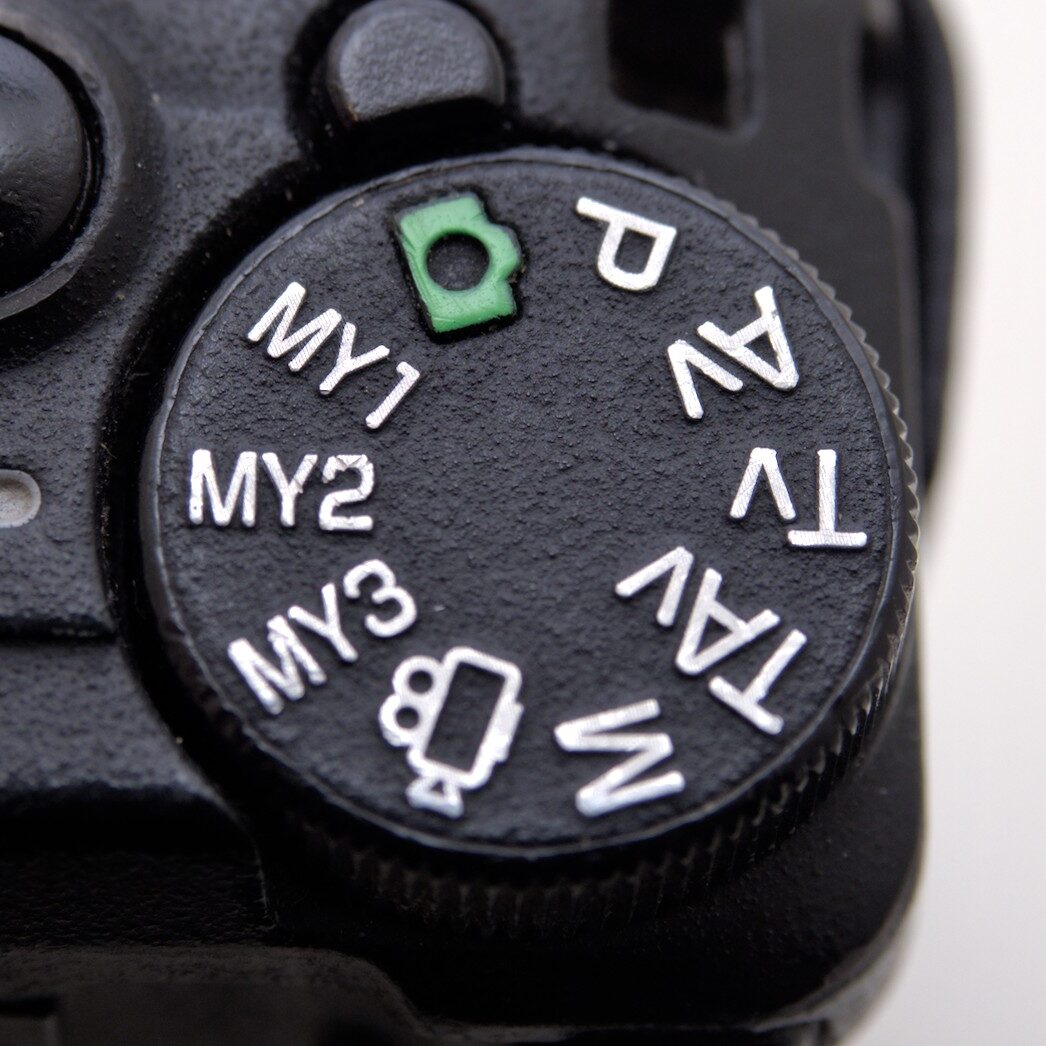
Ricoh cameras allow for named custom modes, but only six of them. Older Olympus cameras allowed assigning custom modes to arbitrary dial positions, but newer ones do not.
Fancy custom mode editing
Sometimes after gaining more experience with a camera, or with photography in general, I make a configuration change that I want in all my custom modes. I’d like a way to copy selected attributes from one custom mode to others quickly. This would become quite important if I could have dozens of custom modes.
Standardized RAW files
Most big camera brands have proprietary RAW formats. Each new camera model has slight changes so that existing editors can’t read the files without an update. Worse, camera manufacturers usually only release the details of how those files work under NDA so that open source editors have to waste time reverse-engineering the formats. I can’t imagine how this benefits the camera manufacturer, but it does negatively impact early adopters.
DNG (digital negative) is an open standard raw format created by Adobe. Virtually every image editor can work with it. It’s used by Leica, Ricoh, many smartphones, and a few cameras from smaller brands. It is not used by any of the sales leaders in the camera industry, and I wish it was.
Standardized batteries
Modern cameras use Li-ion batteries, which are great. Every manufacturer uses its own proprietary design, which is not. Many of the latest battery designs are just two 18500 cells with some basic battery management electronics, for which camera makers charge about ten times the cost of the cells. The electronics could be trivially integrated into the camera itself, allowing the use of 18500 cells directly, or other standardized cells as appropriate to the size of the camera.
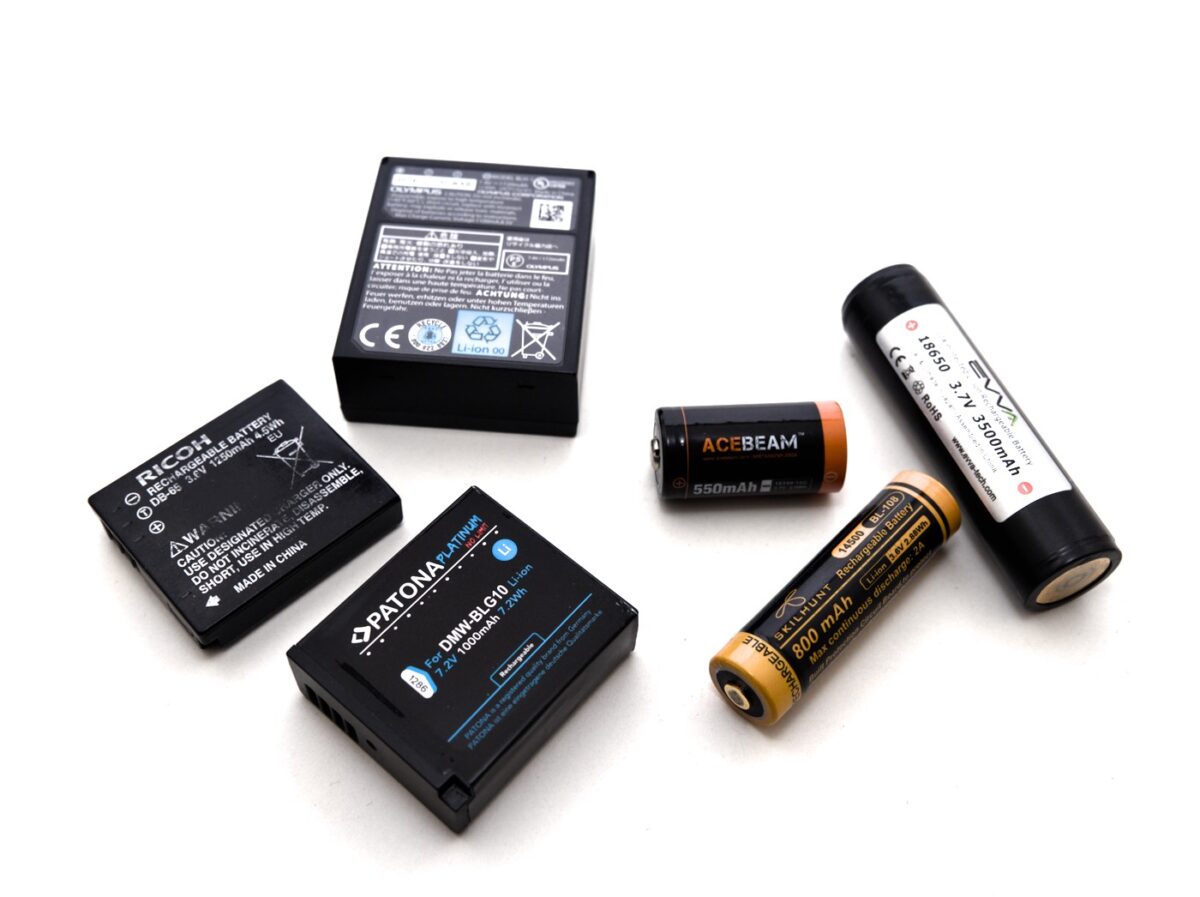
More video aspect ratios
Most cameras shoot video in 16:9. The sensor in most cameras is not 16:9 so that’s a vertical crop. Aspect ratios I’ve seen in recent big-budget productions include 2.39:1, 2:1, 1.9:1, 16:9 (1.77:1), 1.43:1, and 4:3 (1.33:1). Would it be that hard to give me the 8 megapixels or so of 4K video in my choice of any of those?
Fuji recently launched the X-H2S, which allows full-sensor video at the native 3:2 aspect ratio. 3:2 is not a popular aspect ratio for video, but I could imagine some creator making that an aspect of their visual style. That’s a step in the right direction, and more camera makers should follow suit.

